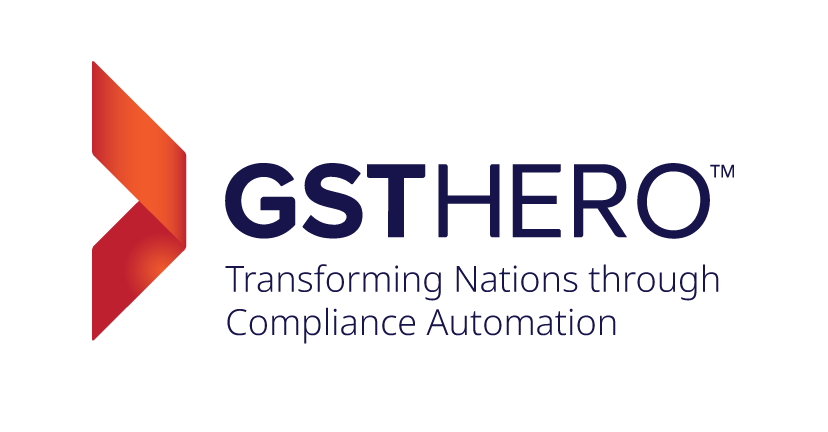As we all know, the historic date i.e., 1st July 2017 was when the Goods and Services Tax (GST) was introduced. Around 13 taxes were subsumed into one single tax known as GST. Article briefly speaking on Implication of GST on Service Industry, GST applicability and its provisions.
Going through the erstwhile laws, we will come to know that taxes like Central Excise, Customs, Sales Tax, Central Tax etc. were levied on the supply of goods. Whereas, service tax was levied on the supply of services.
Notably, the service industry in India remains the growth engine for India’s economy. As per the latest figures of FY 22 (till January 2022), it contributed around 53% to India’s Gross Value Added.
Broadly speaking, the service industry in India covers real estate; transport; hotel and restaurants; business service; financing; insurance; storage; communication; community; social service; personal service; etc.
The taxing pattern for the service industry has gone through a complete transformation from levy of indirect taxation in the form of service tax to Goods and Services Tax (i.e., GST).
In the present article, let us briefly understand GST implications as applicable to the service industry covering basics of GST; time of supply; place of supply; value of supply; SAC; return filing and compensation levy.
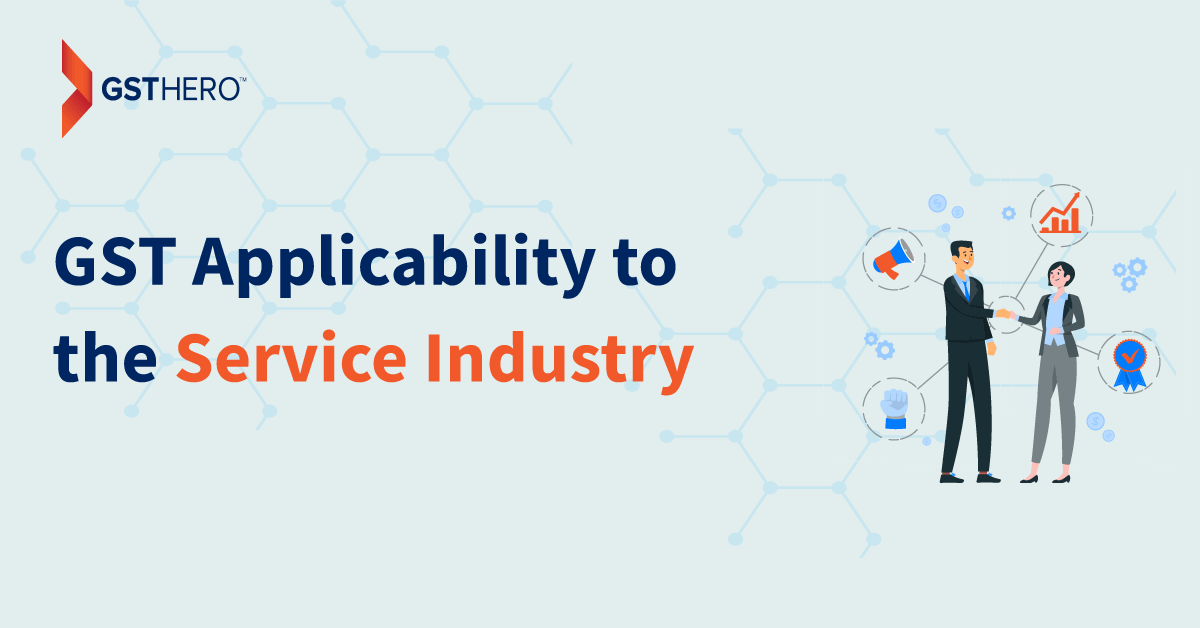
Get Free Bonus Report: Claim 100% ITC for your business
GST Applicability on Service Industry
The term ‘Services’ is defined under section 2(102) of the Central Goods and Services Tax Act, 2017. The definition of ‘Service’ is pretty simple as the same means anything other than goods, money and securities.
Following can be list down as thumb rule under GST with regard to service industry –
- GST is applicable as and when there is the supply of service;
- GST is payable at the ‘Time of Supply’ of service;
- GST i.e., IGST or CGST + SGST/ UTGST is payable in accordance with the ‘Place of Supply’ of service; and
- GST is payable on the ‘Value of Supply’ of service.
From above, it is clear that in order to understand implications of GST on service industry. It is important to analyze the terms ‘Time of Supply’; ‘Place of Supply’ and ‘Value of Supply’ as applicable to the service industry, which is explained hereunder.
Time of supply as applicable to the service industry
As stated under section 13(1) of the Central Goods and Services Tax Act, 2017, time of supply is the point of time when the liability to pay the tax on services will arise. In simple terms, the registered person (service provider) is required to discharge its GST liability at the time of supply.
According to section 13(2), the time of supply of service, as applicable under the forward charge, will be the earliest of the following three dates -The time of supply of service will be the earliest of following | Condition for applicability of the same |
|---|---|
Date of issue of invoice by the supplier | When the invoice is issued within the prescribed time limit |
Date of provision of service | When the invoice is not issued within the prescribed time limit |
Date on which the recipient reflects receipt of service in books of accounts | When the above two provisions don’t apply |
According to section 13(3), the time of supply of service, as applicable under reverse charge, will be the earliest of the following dates –
- Earlier of any of the following dates
- The date of payment as entered in the recipient’s books of accounts; or
- The date of debit in the bank account.
- The date immediately following 60 days from the date of issue of invoice/ any other document.
According to the residual GST provisions covered under section 13(5), if it is not possible to determine the time of supply of service. Then, in such case, the time of supply of service will be –
The time of supply of service will be any of the following | Condition for applicability of the same |
|---|---|
Date of filing of the respective return | In the case where a periodical return is to be filed |
Date of payment of tax | In any other case |
Place of supply as Applicable to the Service Industry
Under GST, transactions are divided into two types i.e., inter-state transactions and intra-state transaction.
IGST is payable in the case of inter-state transaction [i.e., where the location of supplier and place of supply are in two different states/ union territory]. However, CGST + SGST/ UTGST is payable in the case of intra-state transaction [i.e., where the location of supplier and place of supply are in the same states/ union territory].
Accordingly, the ‘place of supply’ is very important for determining the type of tax (i.e., IGST or CGST + SGST/ UTGST) payable under GST.
Provisions of section 12 of the Integrated Goods and Services Tax Act, 2017 cover the place of supply of service in India. In general, the place of supply of service will be –
Situation | Place of supply of service |
|---|---|
When the service receiver is a registered person | Location of service receiver |
When the service receiver is not a registered person | Location of service receiver [if an address is available]; or Location of the service provider |
It is important to note here that GST provisions of section 12(3) to section 12(14) of the Integrated Goods and Services Tax Act, 2017 cover the place of supply of specific services, some of which are covered hereunder –
Service | Place of supply of service |
|---|---|
GST for Restaurant service, catering service, personal grooming, fitness service, beauty treatment, cosmetic service, plastic surgery etc. | Location where the services are actually performed |
Services relating to training and performance appraisal | Location of service receiver [if the service receiver is registered]; or |
Services relating to goods transportation (including by mail/ courier) | Location of service receiver [if the service receiver is registered]; or Location where the goods are handed over for transportation [if the service receiver is not registered]. |
Services on board a conveyance (including vessel, aircraft, train, motor vehicle) | Location of first schedule departure point of the conveyance |
Passenger transportation service | Location of service receiver [if the service receiver is registered]; or Location where the passenger embarks on the conveyance for the continuous journey [if the service receiver is not registered]. |
Insurance service | Location of service receiver [if the service receiver is registered]; or Location of service receiver as per the record of the service provider [if the service receiver is not registered]. |
Banking and other financial services including stock broking service | Location of service receiver as per the record of the service provider. |
Value of Taxable Supply as Applicable to the Service Industry
Section 15 of the Central Goods and Services Tax Act, 2017 deals with the value of taxable supply. Accordingly, the value of taxable supply of service will be the ‘transaction value’, when the supplier and the recipient are not related persons and the price is the sole consideration.
Notably, such transaction value will include the following listed items
- Any taxes, duties, fees, cesses, charges levied under any other statute [other than CGST Act, SGST Act, UTGST Act and GST (Compensation to States) Act] if the same is charged separately from the recipient.
- Any amount which the supplier is liable to pay relating to such supply and the same is paid by the recipient and such amount paid is not included in the price.
- Incidental expenses (including packing, commission etc.) charged by the supplier at the time of or before the supply of services.
- Interest, penalty or late fee for delayed payment of any consideration relating to such supply.
- Subsidies that are directly linked to the price, however, excludes the subsidies as provided by the Central Government and State Government.
As per GST provisions of section 15(4), one needs to refer to the relevant valuation rules, if it is not possible to determine the value of the supply of services as explained above.
SAC and Return Filing Requirements Applicability
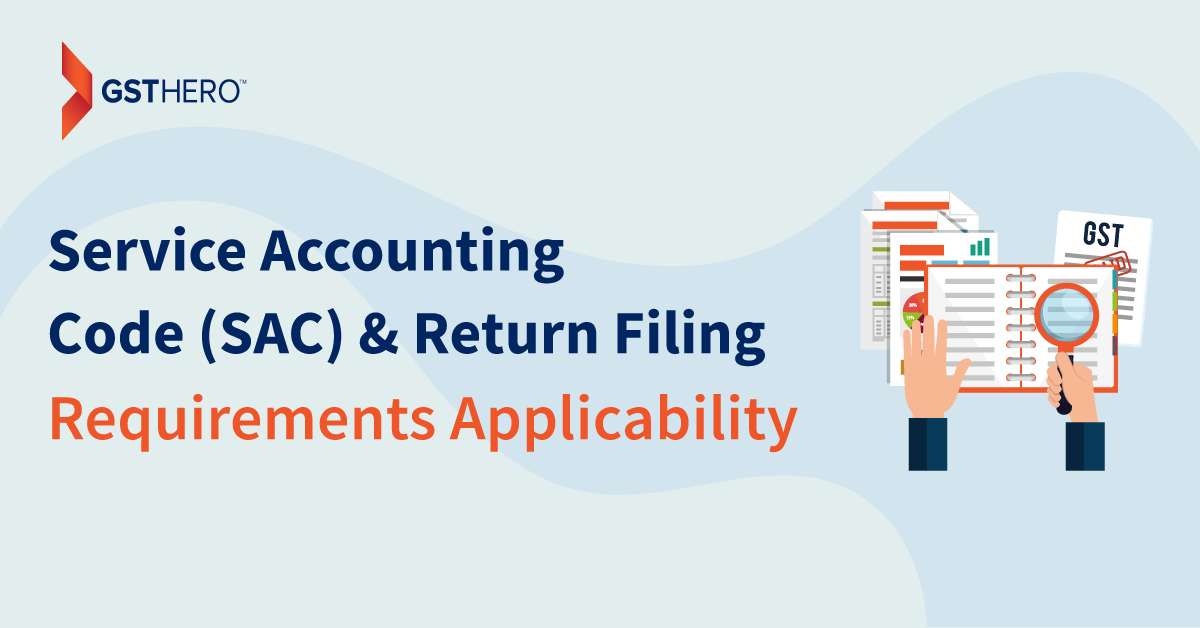
Get Free Bonus Report: Claim 100% ITC for your business
SAC full form called ‘Service Accounting Code’. Services, under GST, are classified on the basis of SAC. It is a 6-digit code.
Notably, based on the aggregate turnover in GST, it is mandatory to mention SAC on the tax invoice by the service provider in the following manner [notification no. 78/2020- Central Tax dated 15th October 2020] –
Aggregate turnover in the preceding Financial Year | Number of digits of SAC to be reflected on the tax invoice |
|---|---|
Up to INR 5 Crores | 4 digits [mandatory only for B2B transactions and optional for B2C transactions] |
More than INR 5 Crores | 6 digits |
Now, let us check the GST return filing requirement as applicable to the service industry. Notably, there is no separate special return filing requirement covered for service providers under GST.
Accordingly, the service provider registered as a normal taxable person under GST will have to file the following returns –
Returns | Filing period and due date |
|---|---|
Form GSTR-1 – Covers details of all the outward supplies of goods or services |
|
Form GSTR 3B – Covers self-declaration |
|
Form No. GSTR 9 Annual return | 31st December succeeding the end of the relevant Financial Year |
Form GSTR 9C – Reconciliation statement | 31st December succeeding the end of the relevant Financial Year |
Composition levy as Applicable to Service Industry
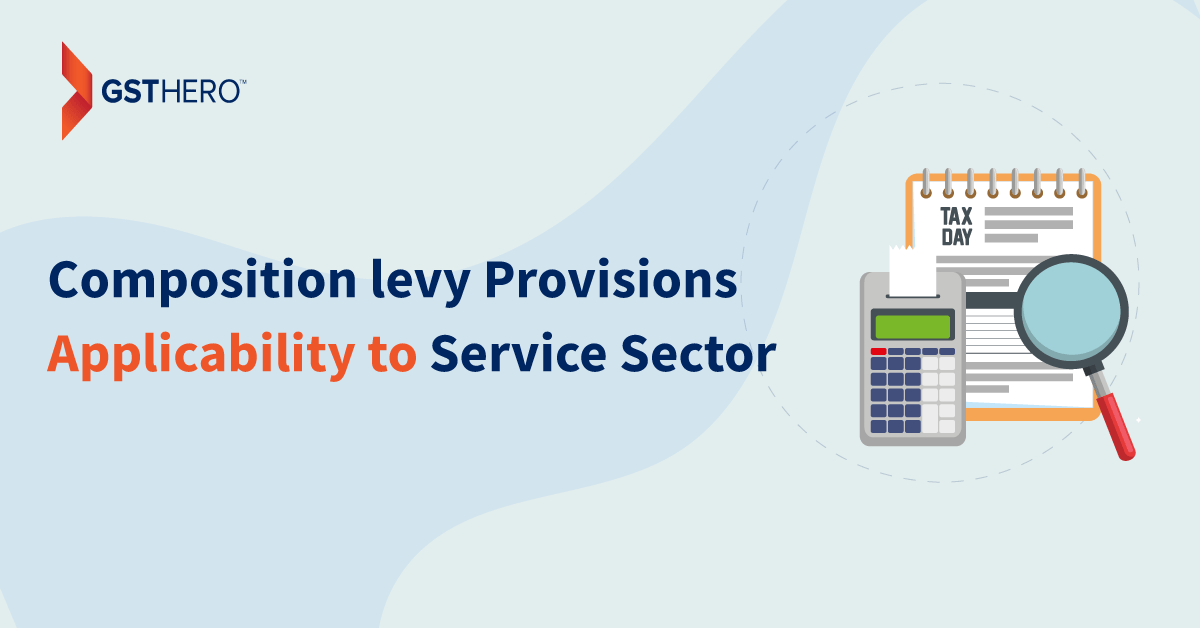
Despite adding enormously to the economy of India, initially, the service industry was debarred from the benefit of the composition levy under GST. Composition benefit was made available to the service industry only vide notification no. 2/2019- Central Tax (Rate) dated 7th March 2019 effective from 1st April 2019.
Composition levy provisions as applicable to the service industry are explained hereunder –
Particulars | Details |
|---|---|
Eligible service provider | The registered person engaged in the supply of services or engaged in the supply of goods or services having an aggregate turnover limit up to INR 50 Lakhs in the preceding Financial Year. |
Form No. GSTR-3B – Covers self-declaration |
|
Composition tax rate for service provider | 6% [3% CGST + 3% SGST] |
GST Return filing as applicable to the service provider under composition levy | The following two returns are to be filed under GST –
|
GSTHero’s automated reconciliation solution
GSTHero provides an easy solution to all your reconciliation problems and makes the process errorless & fully automated.
You can claim a maximum of 100 % ITC with our highly advanced and easy-to-use Reconciliation facility.
You get five essential Reconciliation reports that will be highly beneficial for you to claim 100% ITC and help you identify the defaulting suppliers.
- GSTR1 Vs. GSTR-3B
- GSTR-2A Vs. GSTR-3B
- GSTR1 Vs. Book of Accounts
- GSTR-2A Vs. Book of Accounts
- GSTR1 Vs. E-way Bill
For the businesses in the service industry there are multiple GST registrations a business has to deal with. You can always use GSTHero’s internal GST Audit tool to run an internal scrutiny of all your GST registrations. This will help you to check the compliance status of your business and identify any gaps in your GST Return filing.
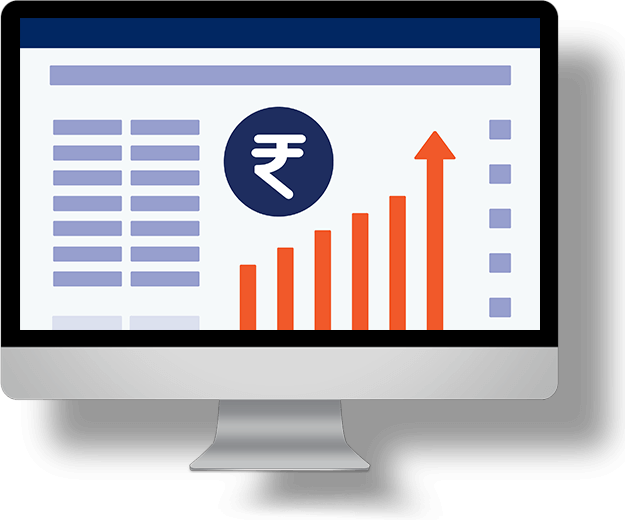
Claim upto 100% Input Tax Credit
Easiest GSTR 2B Reconciliation With Reverse ERP Integration
